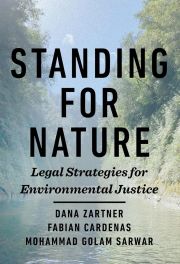Standing for Nature: Legal Strategies for Environmental Justice

I am a firm believer in the ecosystem services approach to advocating for nature conservation, which highlights the services that nature provides to humanity, such as the pollination that supports our food security. After reading Standing for Nature, I now understand that the law can also help ensure that nature has its day in court to protect it from the ravages inflicted on it by humanity.
In January 2025 Taranaki maunga (Mount Taranaki) in New Zealand was granted legal personhood, recognising its cultural and spiritual significance. While granting rights to nature can help to ensure environmental protections and indigenous rights, these laws still face resistance in many countries. The authors describe the complexity of integrating nature into the legal framework, exploring how granting legal rights to rivers, forests and mountains can address environmental injustices and, ultimately, promote sustainable development.
The authors also examine case studies from New Zealand, Colombia, Bangladesh and the United States to highlight the successes and challenges of implementing rights of nature laws. They provide practical insights into the best legal approaches, be they regulatory, judicial or legislative, and discuss strategies for effective implementation and enforcement.
I can thoroughly recommend Standing for Nature if you want to delve into the opportunities and challenges facing environmental justice and legal innovation. This book has changed my world view, placing nature as an equal to humanity, which is essential if we are to continue to derive benefits from the services that nature provides.
Professor Iain Gordon FRSB
Reviewed by Professor Iain Gordon FRSB, Honorary Professor at the Fenner School of Environment & Society, The Australian National University


